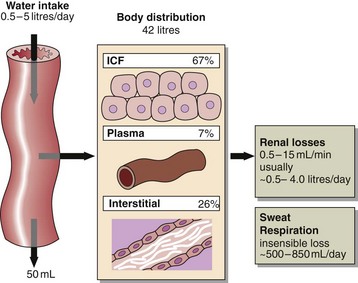7 Specialized cells in the hypothalamus sense differences between their intracellular osmolality and that of the extracellular fluid, and adjust the secretion of AVP from the posterior pituitary gland. A rising osmolality promotes the secretion of AVP while a declining osmolality switches the secretion off (Fig 7.2
Water and sodium balance
AVP and the regulation of osmolality
![]()
Stay updated, free articles. Join our Telegram channel

Full access? Get Clinical Tree


Basicmedical Key
Fastest Basicmedical Insight Engine

